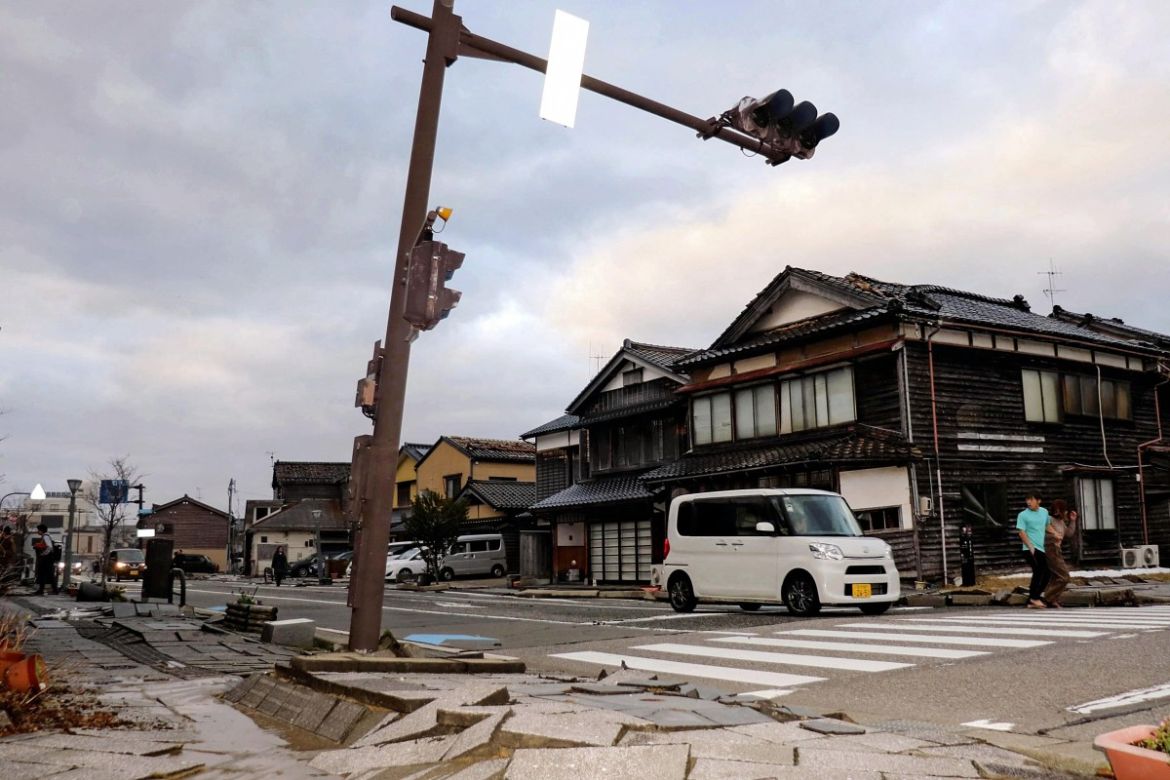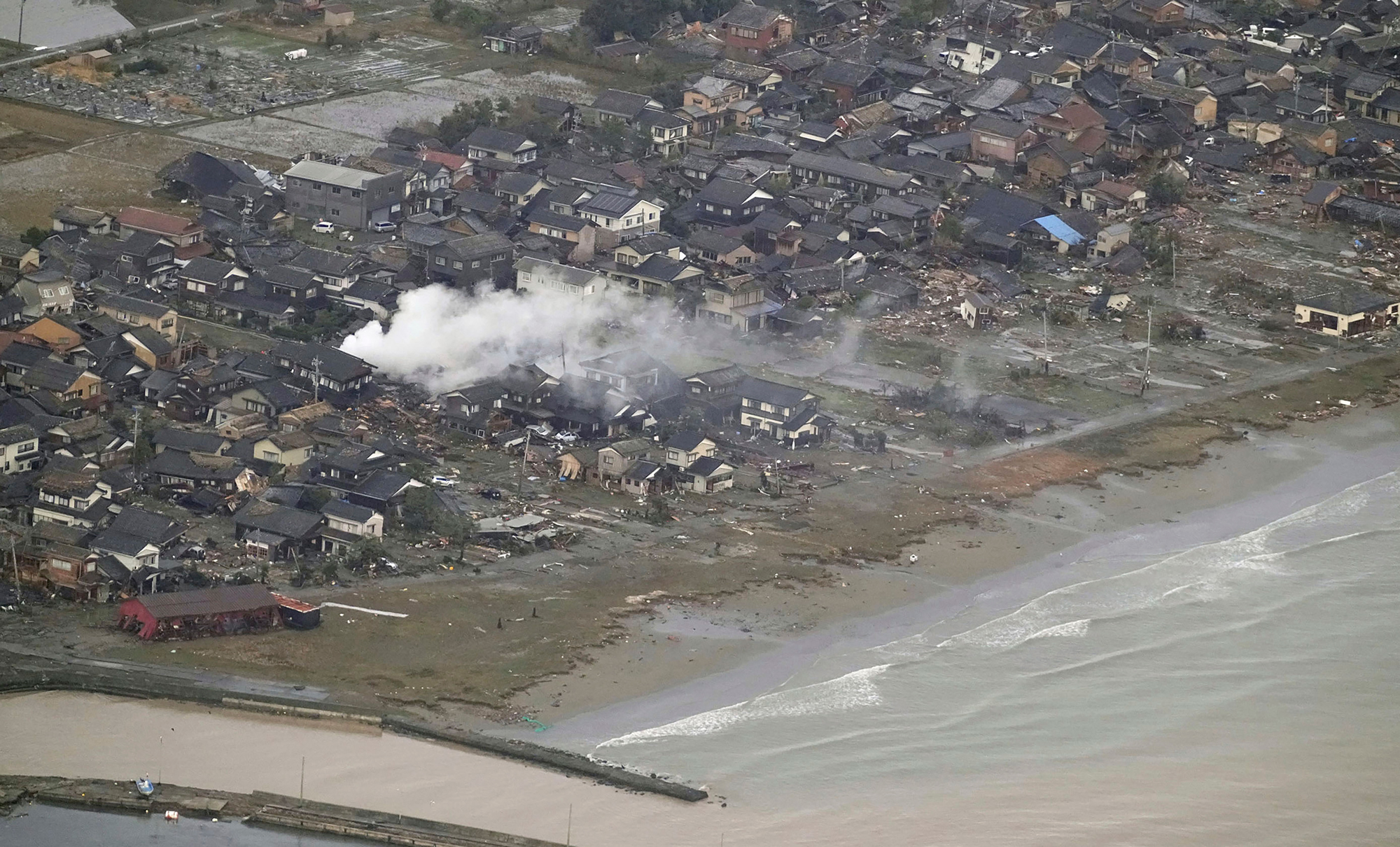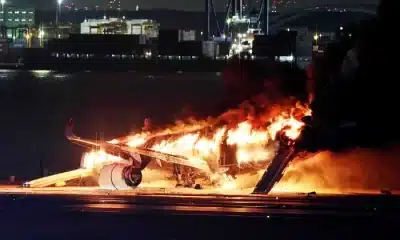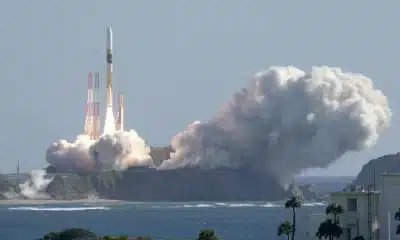Science
Japan Lowers Tsunami Warning After A Series Of Earthquakes But Tells People To Stay Away From Coast
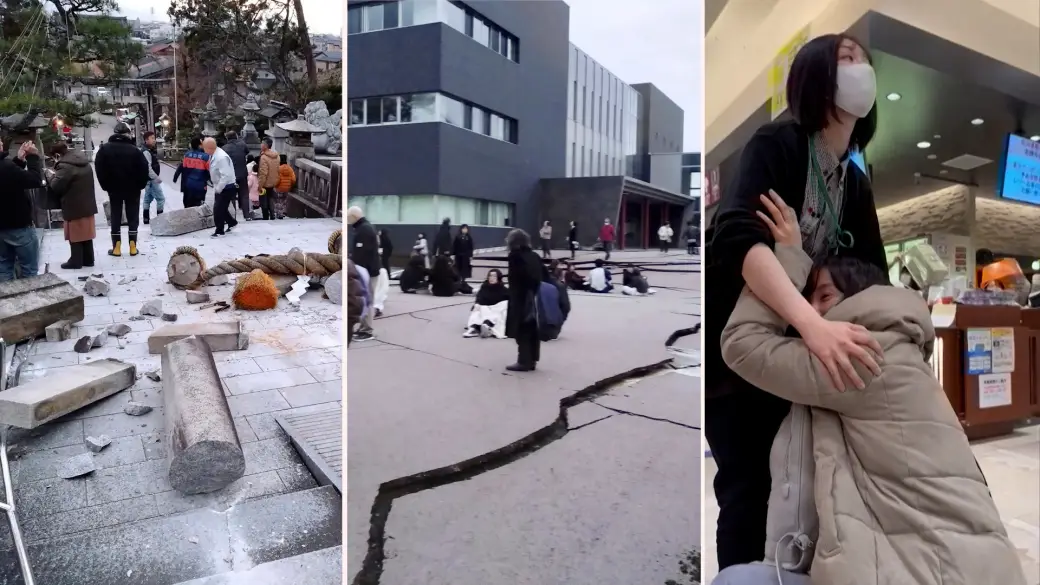
TOKYO, Japan – Japan lifted its highest-level tsunami warning after issuing one following a series of big earthquakes Monday but warned coastal residents not to return home because lethal waves may still hit.
The earthquakes, the greatest of which had a magnitude of 7.6, sparked a fire and destroyed structures on Japan’s main island, Honshu. It was unclear how many individuals were killed or injured.
According to the Japan Meteorological Agency, more than a dozen powerful earthquakes were detected in the Japan Sea off the coast of Ishikawa and adjacent prefectures beginning shortly after 4 p.m. local time.
The quakes damaged at least six homes, trapping people inside, according to government spokesperson Yoshimasa Hayashi. According to him, a fire broke out in Wajima, Ishikawa Prefecture, knocking out power to more than 30,000 houses.
The meteorological office initially issued a major tsunami warning for Ishikawa and lower-level tsunami warnings or advisories for the rest of Honshu’s western coast and Hokkaido, Japan’s northernmost main island.
Hayashi emphasized the need for people to move away from coastal locations.
“Every second counts. “Please evacuate to a safe location as soon as possible,” he advised.
Japan Lowers Tsunami Warning After A Series Of Earthquakes
Several hours later, the warning was downgraded to a standard tsunami warning, implying that the sea might generate waves of up to 3 meters (10 feet). The agency warned that aftershocks could hit the same area in the next few days.
NHK TV, Japan’s state broadcaster, first warned that torrents of water could reach heights of up to 5 meters (16.5 feet) as aftershocks pounded the region; the network broadcasted warnings for hours.
Even hours after the first evacuation warning, people returning to retrieve their wallets and other possessions have been known to be swept away and perished. People were evacuated to stadiums, where they will most likely be required to stay for several days.
Footage from Japanese media showed people racing through the streets and crimson smoke billowing from a fire in a residential area. Photos showed a gathering of people, including a mother carrying a baby, standing near massive fractures in the pavement.
Japan Lowers Tsunami Warning After A Series Of Earthquakes
According to NHK, some people were injured as they stumbled and fell while running or when goods fell from shelves and hit them.
Hayashi stated that no reports of deaths or injuries from the quakes had been confirmed and that the situation was still unclear. He said that Japan’s military was helping with rescue efforts.
Bullet trains in the vicinity were halted, though some services were resumed by the evening. According to NHK, parts of a roadway were also closed, and water lines had broken. Some cell phone services in the area were down.
In a nationally broadcast news conference, the Meteorological Agency said that further big quakes could impact the area in the coming week, particularly in the following two or three days.
According to the agency, more than a dozen powerful earthquakes have been registered in the region, with the potential for landslides and house collapses.
Takashi Wakabayashi, a convenience shop employee in Ishikawa Prefecture, said some things had fallen from the shelves, but the major issue was the large crowd that had gathered to stock up on bottled water, rice balls, and bread.
“We have customers at three times the level of usual,” that’s what he said.
There were also tsunami warnings issued for regions of North Korea and Russia.
According to Prime Minister Fumio Kishida, the Japanese government has established a special emergency centre to receive information on earthquakes and tsunamis and quickly communicate it to inhabitants to protect their safety.
In a statement, US President Joe Biden said his administration was in contact with Japanese officials and was “ready to provide any necessary assistance for the Japanese people.”
Although Japan is prone to earthquakes, no tsunami warning of the size of Monday’s had been issued since a big quake and tsunami caused meltdowns at a nuclear plant in March 2011.
Hayashi, a government spokeswoman, told reporters Monday that nuclear reactors in the affected area had not reported any anomalies. Nuclear regulators stated that no increases in radiation levels were detected at the region’s monitoring stations.
___ Contributors included Hyung-jin Kim in Seoul, Katie Davies in London, and Lorian Belanger in Bangkok.
A day after a magnitude 7.6 temblor struck the area on Monday afternoon, aftershocks continued to batter Ishikawa prefecture and surrounding territories.
According to prefecture officials, four persons were confirmed dead in Ishikawa. Police stated they were looking into two further reported deaths. NHK reported at least eight deaths and 30 injuries, including some who fell while attempting to leave.
“Our priority is to save lives, and we are fighting a race against time,” Prime Minister Fumio Kishida stated on Tuesday. “It is critical that people trapped in homes get rescued immediately.”
SOURCE – (AP)

